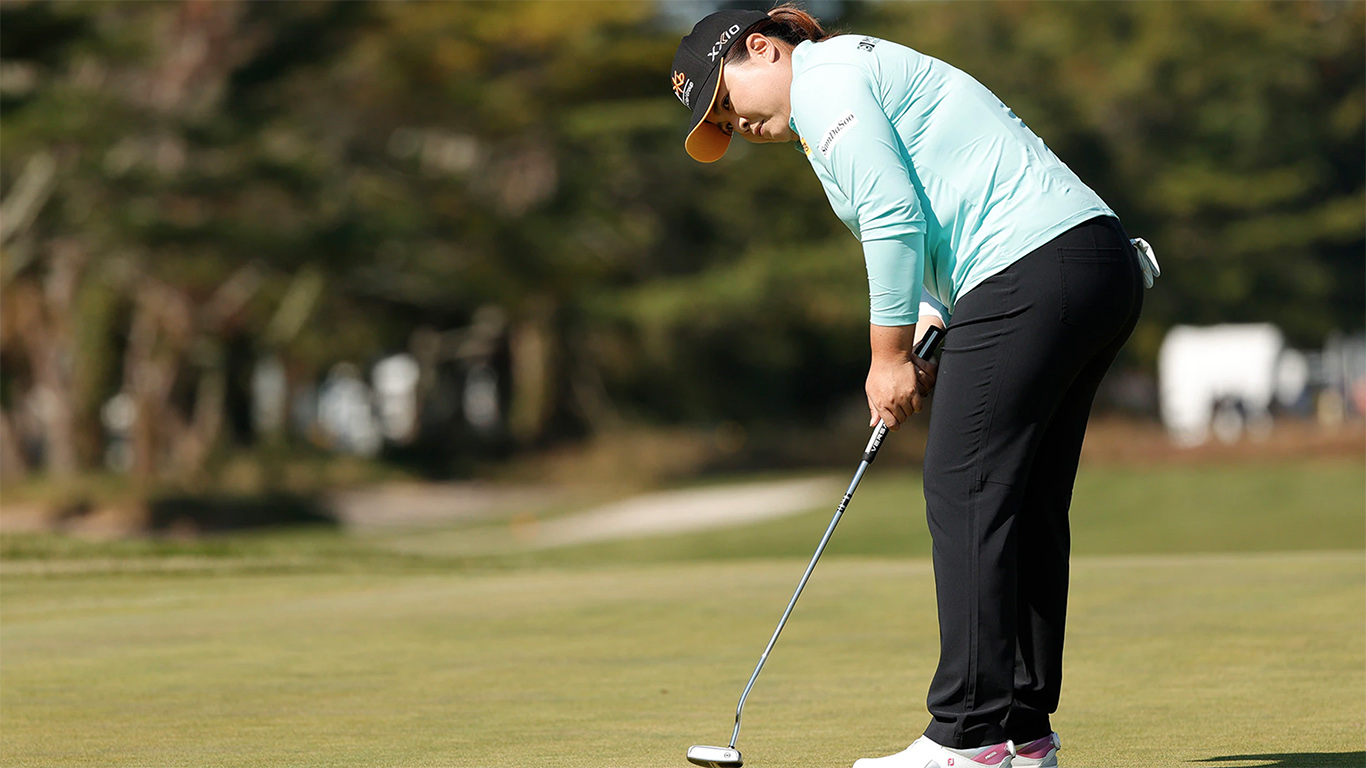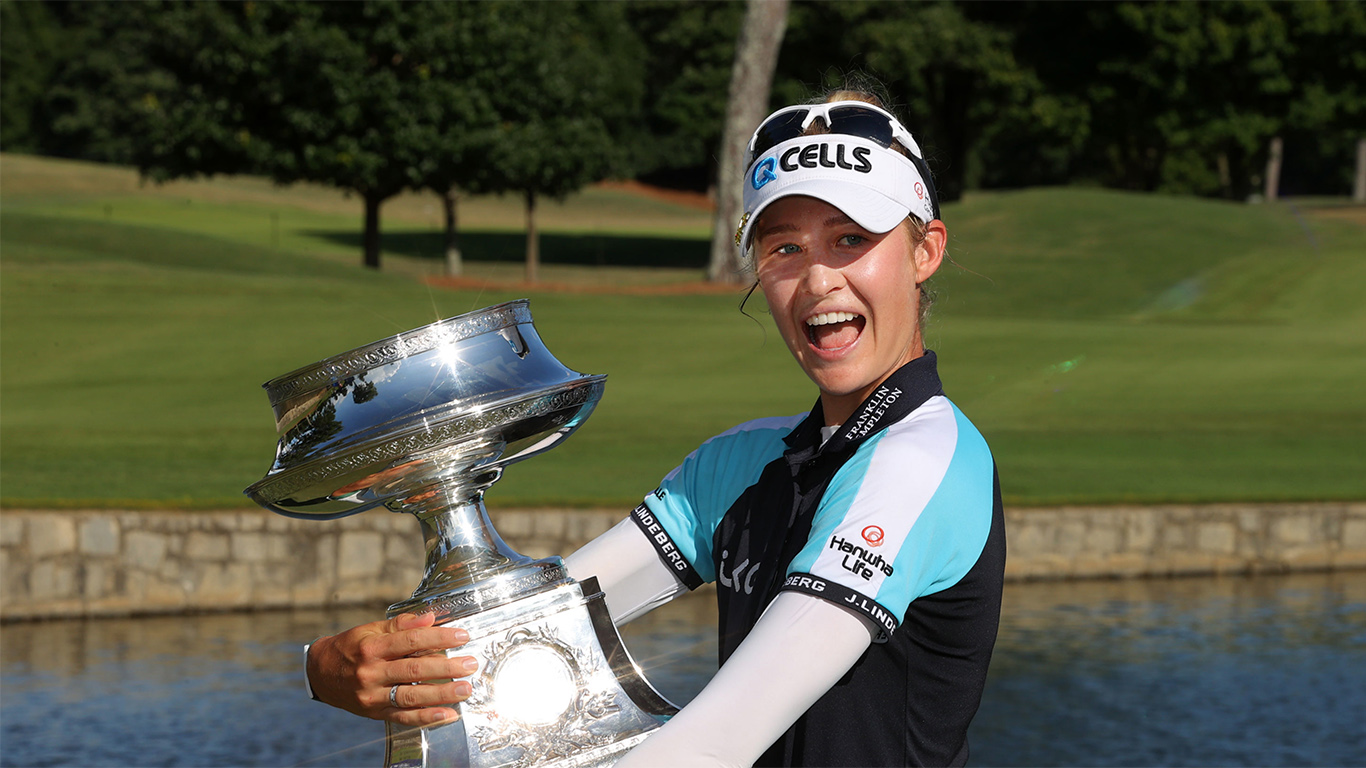Ponte Vedra has won a couple of battles in the past few days. After Phil Mickelson imploded in the process of defending his involvement with Saudi Arabia’s attempted takeover of professional golf, Dustin Johnson and Bryson DeChambeau declared their intentions to stick with the PGA Tour (for now). But make no mistake, the Saudi-backed Super Golf League has a lot of money, and it’s not going away. The Tour remains acutely vulnerable.
Meanwhile, the LPGA Tour has an exciting opportunity on its hands. As long as it doesn’t get drawn in by the next phase of Saudi sportswashing, the LPGA could learn from the shortcomings and missteps of its “strategic ally” and become a model professional golf league.
If the PGA Tour as we know it crumbles over the next few years, a big portion of the blame will rest with its reluctance to innovate. Hardcore fans have grown bored with a stale TV product, and stars have become frustrated with a financial structure that undercompensates them while overcompensating supporting actors. By letting these problems fester, the Tour has opened the door for the threat it faces today. So this is the first thing the LPGA should learn from the PGA Tour: innovate or get picked apart by deeper-pocketed competitors.
The LPGA Tour may even be able to present itself as a safer bet than the PGA Tour for sponsors in search of a long-term investment. Right now, the PGA Tour can’t guarantee that its most bankable players will stay in the fold or that its tournaments will maintain their strength of field. Long-time corporate partners like Honda and AT&T have gotten burned recently by scheduling chaos. In contrast, if the LPGA can be adaptable, innovative, and forward-thinking, it can come to appear more dependable than the PGA Tour. That should be a selling point to any potential sponsor.
Small strides are already being made this year. The LPGA’s new YouTube docuseries on the CME Group Tour Championship offered a behind-the-scenes peek at some of the tour’s most compelling players. On a fraction of a Netflix-grade budget, the LPGA produced an engaging series that showcased the talent and likability of its members.
On LPGA telecasts, in-round interviews and mic’d up players are becoming the norm. This is another major point of difference with the PGA Tour, where many players have adamantly refused to grant more access. When you get to watch Dame Laura Davies stroll down the fairway chatting with Amy Rogers, talking about how the LPGA has more talent than ever before, it’s a welcome break from the repetitive dullness a golf broadcast can fall into.
As for on-course statistics, the LPGA Tour has catch-up to do, but the KPMG Performance Insights Player Dashboard is a welcome development. The data will be beneficial to various stakeholders, and for the rest of us, it will put performances and skill sets in their proper context, allowing us to compare, say, Inbee Park’s putting numbers to those of Jordan Spieth and Cameron Smith. For journalists and broadcasters, these stats will enable them to tell stories that they simply can’t tell today.

Inbee Park has one of the purest putting strokes in the game (Getty)
The LPGA has a few other cards in its hand. Its schedule isn’t as bloated as the PGA Tour’s, so nearly every event has a loaded field. Scarcity increases a product’s value, and the LPGA should continue to pursue quality over quantity. Also, it is a truly global tour, not only in the diversity of its membership but also in the variety of its tournament locales. The LPGA’s potential reach throughout the world is massive.
At the same time, young American stars are always helpful, and the LPGA Tour has a pair of them in Danielle Kang and Nelly Korda. Kang has won three times since August 2020 and is currently No. 4 in the Rolex Rankings. Korda broke through for her first major at last year’s KPMG Women’s PGA Championship, and she briefly took over the top spot in the world rankings, the first time an American had achieved that feat since Stacy Lewis in 2014.

Nelly Korda hoisting the trophy at the 2021 KPMG Women's PGA Championship (Getty)
No doubt the LPGA has room for improvement. While three of the five women’s majors—the U.S. Women’s Open, the Women’s PGA, and the Women’s British Open—have started to visit premier venues like Olympic Club and Carnoustie, the LPGA schedule is full of bland host courses. This is too bad, considering that a women’s golf tour presumably has a greater pool of venues to choose from because the players aren’t (yet) averaging 300 yards off the tee. So if the LPGA wants to differentiate itself further from men’s tours, it should go to well-known courses with rich history and strategic design, such as JTBC LA Open host Wilshire Country Club.
◊
It’s hard to predict how Saudi Arabia’s influence, which is currently wreaking havoc in men’s golf, will play out in the women’s game. The LPGA’s European counterpart, the Ladies European Tour, has already taken the plunge into a pile of Saudi cash with the Aramco Saudi Ladies International, which will be played for the third time in mid-March.
Was the LET in a position to turn down a huge purse? Maybe not. But where this money is coming from cannot be ignored, and the international stars who make the trip to Jeddah next month shouldn’t be exempt from criticism. Of course, it’s also true that an up-and-coming LET player has a more understandable rationale for playing in Saudi Arabia than a PGA Tour millionaire drawing an enormous appearance fee to say, “I’m not a politician.”
And if Saudi Arabia gains a foothold on the LET, will the LPGA be next? Say the PGA Tour manages to vanquish the Super Golf League. Perhaps at that point LIV Golf Investments, backed by the Saudi government’s Public Investment Fund, will turn its focus to women’s tours, which don’t have PGA Tour-like financial reserves to keep their top players from straying. That’s a real possibility, and a concerning one.
It will take months, maybe years, for the new landscape of professional golf to come into focus. But the outlook for the LPGA Tour has never been brighter. As the PGA Tour fends off enemies from its moat-protected home, the LPGA can grow like it hasn’t for years. So if your eyes rolled and threatened never to come down when Phil Mickelson complained about someone else’s “obnoxious greed” or when Charley Hoffman whined about a lack of “protection,” perhaps it’s time to follow a tour you can actually root for.


 by
by 
